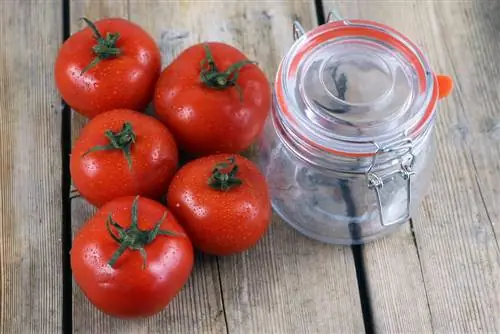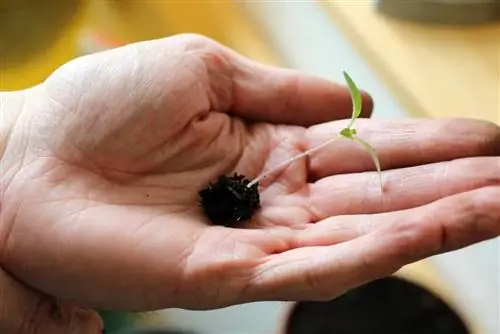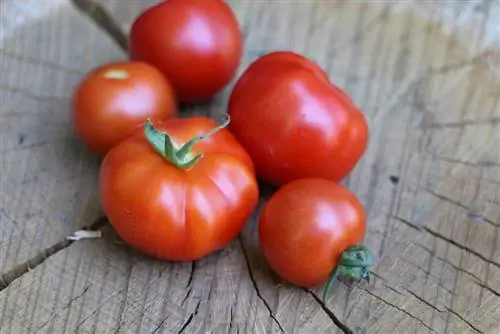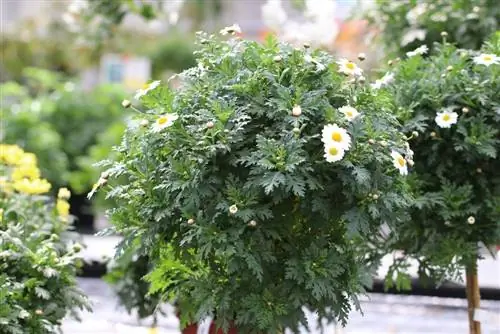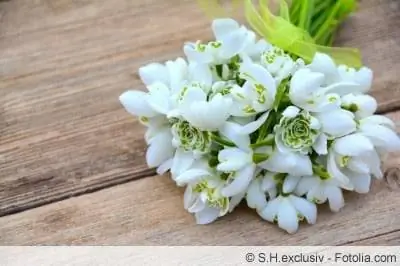- Author admin [email protected].
- Public 2023-12-17 03:39.
- Last modified 2025-01-24 12:45.
The tomato plants should one day bear plump, red and intact fruits. But until then, these diverse nightshade plants (Solanum lycopersicum) need to be treated adequately. Basically, it's enough to put yourself a little into the tomato soul. It's already growing happily. It protects against pests, first delights the bees and then people. There are three main components to keep an eye on when caring for it: the weather, correct watering behavior and rooting out. Here are the details.
Before care
Where should the tomatoes go, in pots on the balcony, in the greenhouse, in the raised bed or in the bed? Grow from seeds or buy plants? Which variety?
The type of culture and the selection of plants determine what else needs to be taken into account in further tomato care, apart from “weather, watering, stinginess”.
Sowing and Planting
Seeds
When it comes to caring for tomatoes in the first few weeks, there is a difference whether you grow the seeds yourself or buy the small tomato plants in April. When buying tomato seeds, you have to decide on a specific seed. For the high-performance, sterile F1 seeds or for seed-resistant seeds. The latter has, among other advantages, the advantage that you can successfully sow your own seeds from the fruit again. There is a larger selection of rare varieties among the seed bags than among the young plants on offer.
Young plants
Buying young plants early not only saves you from caring for the young seedlings and pricking them out. Many varieties are available in a refined version. They bear many times more fruit. However, they are particularly sensitive to rain and are best suited for the balcony, terrace or greenhouse.
Varieties
The selection of tomato varieties is really huge. But it's not just the taste that will be decisive for the choice of variety. The intensity of care and robustness against certain diseases will also play a role. Below are some examples of varieties:
Tomato ‘Celsior’
Strong-growing and robust cocktail tomato. Long harvest time until the first frost.
Tomato 'Cerise Yellow'
Suitable for outdoors and pot cultivation. Very vigorous, needs to be tied up. He althy and robust against late blight.
Tomato ‘Dattelwein’
One of the best sweet tomatoes. It bears a particularly large number of small fruits that do not burst easily. This variety is suitable for both outdoors and cultivation in containers.
Tomato ‘Matina’
An old, well-proven variety with burst-resistant fruits. Early harvest in the greenhouse and on the farm.
Tomato 'Mexican Honey Tomato'
Robust and very suitable for outdoors. Grows very tall, is high-yielding and reliably produces aromatic, sweet tomatoes. Also tolerates drought.
Tomato 'Chernij Prinz'
Very robust, early beefsteak tomato variety. Also suitable for outdoor use.
Cocktail tomato 'Sugar Grape'
Strong-growing and robust cocktail tomato. Very suitable for pot culture on the balcony or terrace.
Tip:
Among others, the varieties 'Sweet Million', 'Tigerella', 'De Berao', 'Philovita F1', 'Dasher' and 'Philovita' are considered to be particularly resistant to the dreaded late blight.
8 care tips
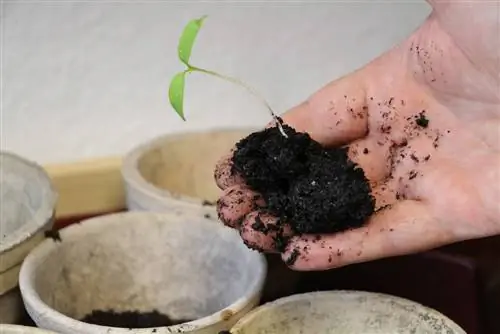
Proper care determines the he alth of the plant and therefore also the success of the harvest. Here are our tips for tomato care:
The right start
The tomato plants only go outdoors when the ground is definitely frost-free. It doesn’t matter whether they were grown early or purchased as finished plants. This is usually the case in May after the Ice Saints. Of course, this is not a problem in the greenhouse. If you want to harvest early, you can plant the plants in April, but you should then follow the weather forecast. If night frost is predicted, the plants must be covered with foil in good time. The foil should not touch the leaves and should be removed again first thing in the morning.
Soil and location
The seedlings should be planted deep enough in the pot or soil. Five centimeters above the root base is a good measurement. This allows more new roots to form. At best, the soil is very nutrient-rich. To prepare the soil, this means mixing the soil thoroughly with compost. To prevent diseases and pests, tomatoes should not be replanted in a bed where tomatoes were already grown the year before. Particularly good neighbors are radishes, spinach or cabbage. Peas, fennel and other nightshade plants such as eggplants, potatoes and peppers should not be grown close to tomatoes.
The first weeks
Now the small tomato plants need warmth and water for a good start. It is very important to have good drainage in the pots or loose soil outdoors so that the small roots do not stand in the wet. They should have some support right from the start. Some species can reach heights of over a meter.
Simply
Pinching out is the name given to removing the small side shoots. As is often the case, there are two different opinions on this topic. Some consider austerity to be indispensable, the other side is against it. An overview of the arguments can help everyone make their decision.
Benefits of maxing out
- the existing strength goes into the fruit-bearing shoots; more energy means more and bigger fruits
- fewer shoots, less foliage means better ventilation, less susceptible to fungal diseases
Disadvantages of austerity
- many open wounds can promote the penetration of pathogens
- greater susceptibility to wind in the slender, tall, mature plants
- more maintenance effort; Danger of accidentally removing fruit-bearing shoots
If you decide to put in a little more effort and choose a slender plant with lots of strong fruits, you should start pinching out the young plant in June. As growth continues, remove the side shoots once a week until the last tomatoes ripen in September. You can clearly see these side shoots in the leaf axils and simply break them out to the side.
cutting shoots
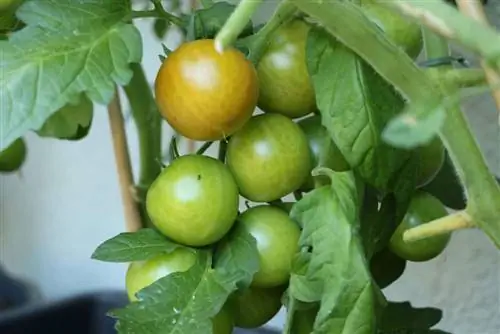
As a rule, a tomato plant is allowed to grow up to a maximum of two main shoots, except for bush tomato varieties or wild varieties. The main shoot absolutely needs a stable support until the end.
Tip:
All previously used trellises, regardless of the material, should be disinfected before being used again. You can rub them with denatured alcohol or use a gas burner.
In the course of the growing season, you can relieve the strain on the plant if you cut off all shoots that do not bear flowers. At the end of August you can also simply cut off the main shoot or shoots after the fifth flowering. This means you can harvest large, ripe tomatoes until the end. Flowers or shoots that still form in late summer should be rigorously removed in favor of the existing fruits.
fruit set
The first flowers are now here. But will they also bear fruit? Are all flowers pollinated? The tomato plant is self-pollinating. This means that the pollen from one flower must be transferred to the stigma of another flower. This could be the same plant. Bees, bumblebees and wind usually take care of this. This is not easy, especially in a greenhouse. Then you just have to help a little:
- Ventilate the greenhouse thoroughly, at least once a day
- Shaking tomato plants
- Transfer the pollen from flower to flower with the brush
If the fruits remain small and hard, it is a sign that they have not been sufficiently pollinated.
Fertilize
The tomato plants, as heavy feeders, have already been given a nutrient-rich substrate to get started. But you can start fertilizing the plants regularly in June. In any case, as soon as the first flowers form, fertilize every two weeks. You can use a ready-made fertilizer that is tailored precisely to the needs of the tomato. If you prefer it natural, you can water with diluted nettle or comfrey manure. The liquid fertilizer is of course added directly to the soil so that the leaves are not wetted.
Cow dung, horse manure, horn meal or horn shavings are also suitable as natural fertilizers. The waste from thinning and pruning is also suitable as long as it is he althy. If the tomatoes don't get enough or the wrong nutrients, this can often be seen in their leaves or fruits. If the abnormalities are correctly interpreted, they can be addressed with appropriate fertilizer applications. However, there does not always have to be a specific nutrient deficiency or error; temperatures, sunlight and lighting conditions can also be behind it:
- Flower end rot: brown-black, gray discoloration at the base of the flowers: calcium deficiency
- Green or yellow collar on the fruits: potassium deficiency or excess nitrogen
- Light leaf areas of the middle to lower leaves: magnesium deficiency
- Yellow discoloration on the leaf edges: potassium deficiency
- Red discoloration of the leaves: phosphorus deficiency
- Yellowish leaves: nitrogen deficiency
- Spoon leafiness (peak shoot rollers): over-fertilization
Water supply
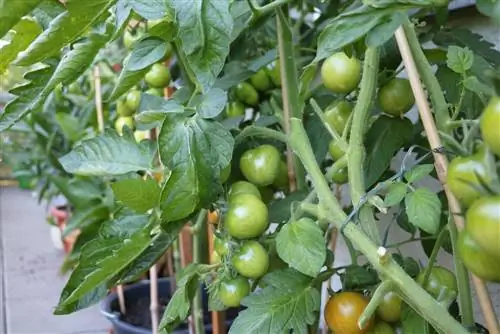
Lots of leaves, lots of fruits, that means the tomato plant also needs a lot of water. Two points are important when watering:
Firstly
The regularity. Regular watering throughout the entire growing season ensures that the fruit develops flawlessly. If you neglect to water your tomatoes for several days and then try to make up for it with double the amount of water, you risk splitting the fruit. If you are particularly careful with your tomatoes, water them in the morning with stale, slightly tempered water.
Secondly
Only water from below! No matter whether it's rain or irrigation water, the tomato plants don't get wet leaves at all. They become susceptible to the dreaded late blight (Phytophtora), a fungal infection. Of course, the tomatoes in the bed don't die immediately when a rain shower hits the country. But if there are several rainy days, you should also protect the outdoor tomatoes with foil. The tomatoes in the bucket can be stored dry relatively easily.
Tip:
If you protect your tomatoes from rain with closed tomato houses or hoods, you must pay meticulous attention to good ventilation. Temperature differences create condensation underneath, which in turn promotes fungal infestation.
Protect tomatoes
late blight (Phytophtora infestans)
Rainy summers put tomato plants at risk of being attacked by late blight. High humidity and cooler summer temperatures below 18 degrees also promote infestation with the spores of this type of fungus. Here is an overview of all the important protective measures:
- do not wet the leaves when watering
- protect the plants in case of persistent rain
- remove the older leaves from below
- Do not plant tomato plants too closely in spring
- Do not let tomato plants grow too densely by pruning
- Remove affected leaves or fruits immediately (in the early stages this can save the harvest)
Drought spot disease (Alternaria solani)
Warmth and high humidity promote an infestation with the pathogen Alternaria solani. It is best to protect the tomato plant from this as much as possible with the right care:
- as dry a location as possible
- Early detection through careful, regular inspection of leaves and stems
- remove large leaves at the bottom (up to 25 cm)
- do not plant near potato plants
- only use clean supports
Powdery mildew (Oidium neolycopersici)
A whitish fungal coating on the leaves that can cause the entire plant to die. In addition to resistant varieties, you should pay attention to the following when caring for them:
- ensure constant temperatures (at least possible in the greenhouse)
- watering in the morning
- Every now and then enrich the irrigation water with a little nettle broth or horsetail broth
- removing weeds outdoors
- cover the ground with bark mulch outdoors
Snails
Slugs are everywhere and in large numbers, especially in wet weather. If you want to avoid slug pellets etc., you can't avoid collecting the pests every day. Early evening is the best time for this.
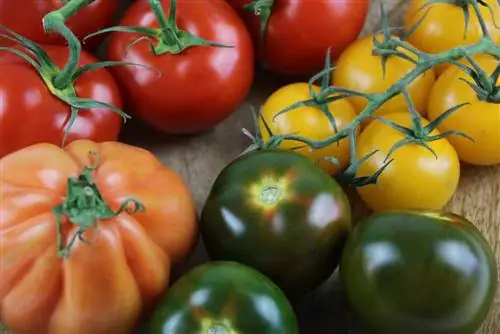
Conclusion
These delicious, red fruits are very sensitive to the weather. But anyone who has once harvested and eaten home-grown, unsprayed tomatoes will do so again and again. Ultimately, many varieties are quite robust and you can literally watch the plants grow. If you place one or two beautiful specimens near seating areas, you will also keep many annoying flying insects away. In almost every neighborhood there is someone who grows tomato plants from seeds and would be happy to donate a few specimens for the balcony or terrace. It's best to start right away next season with your own tomatoes.


